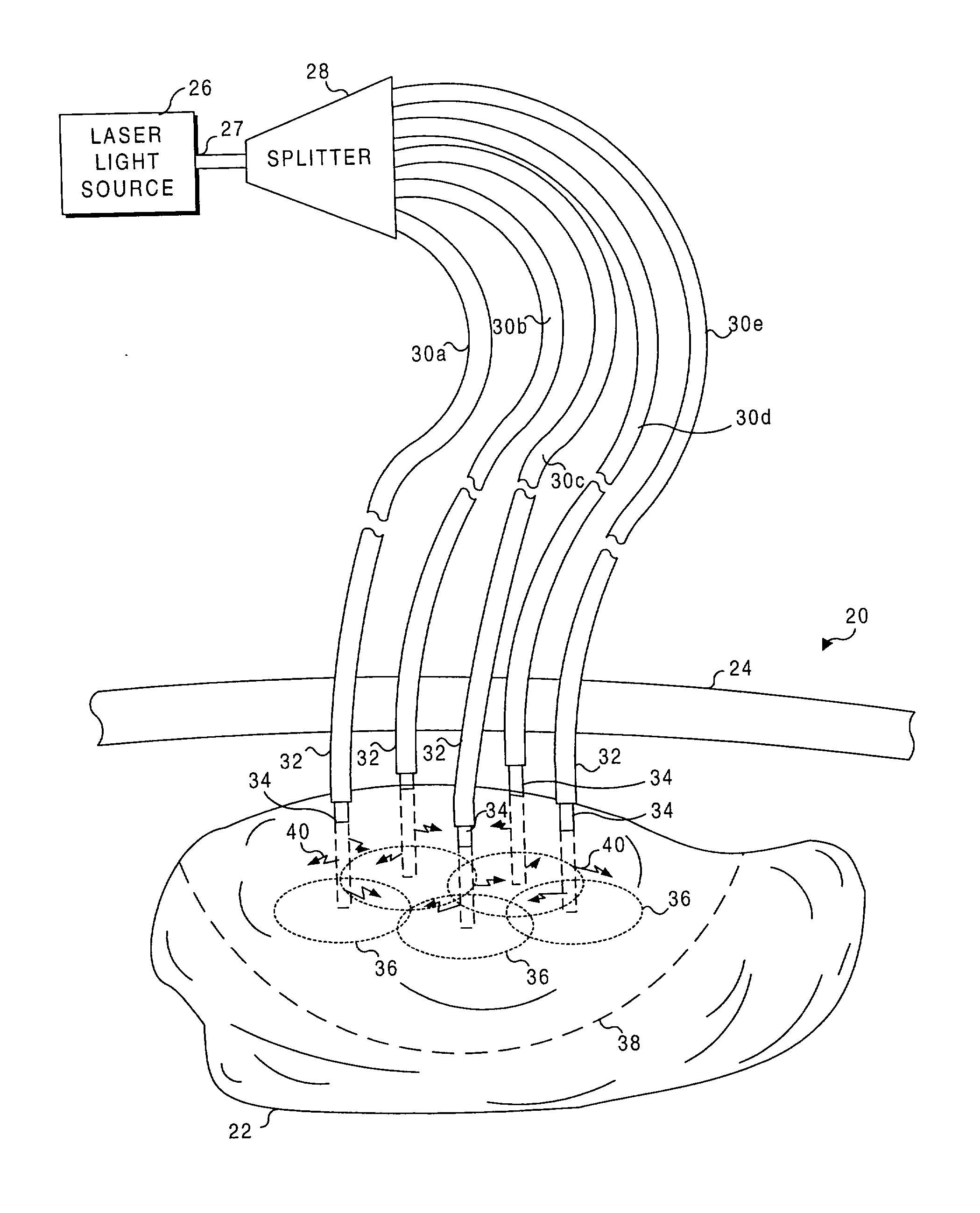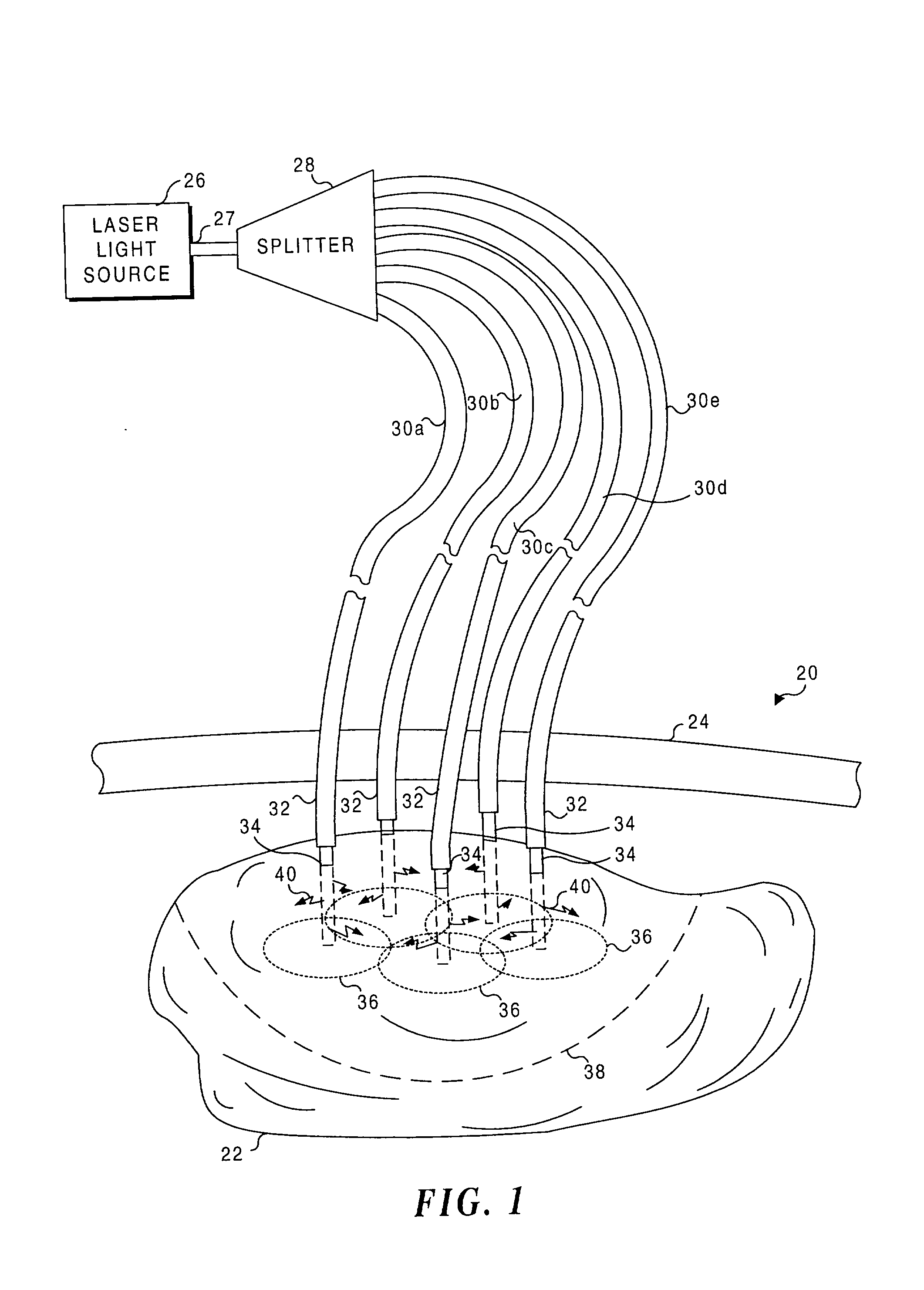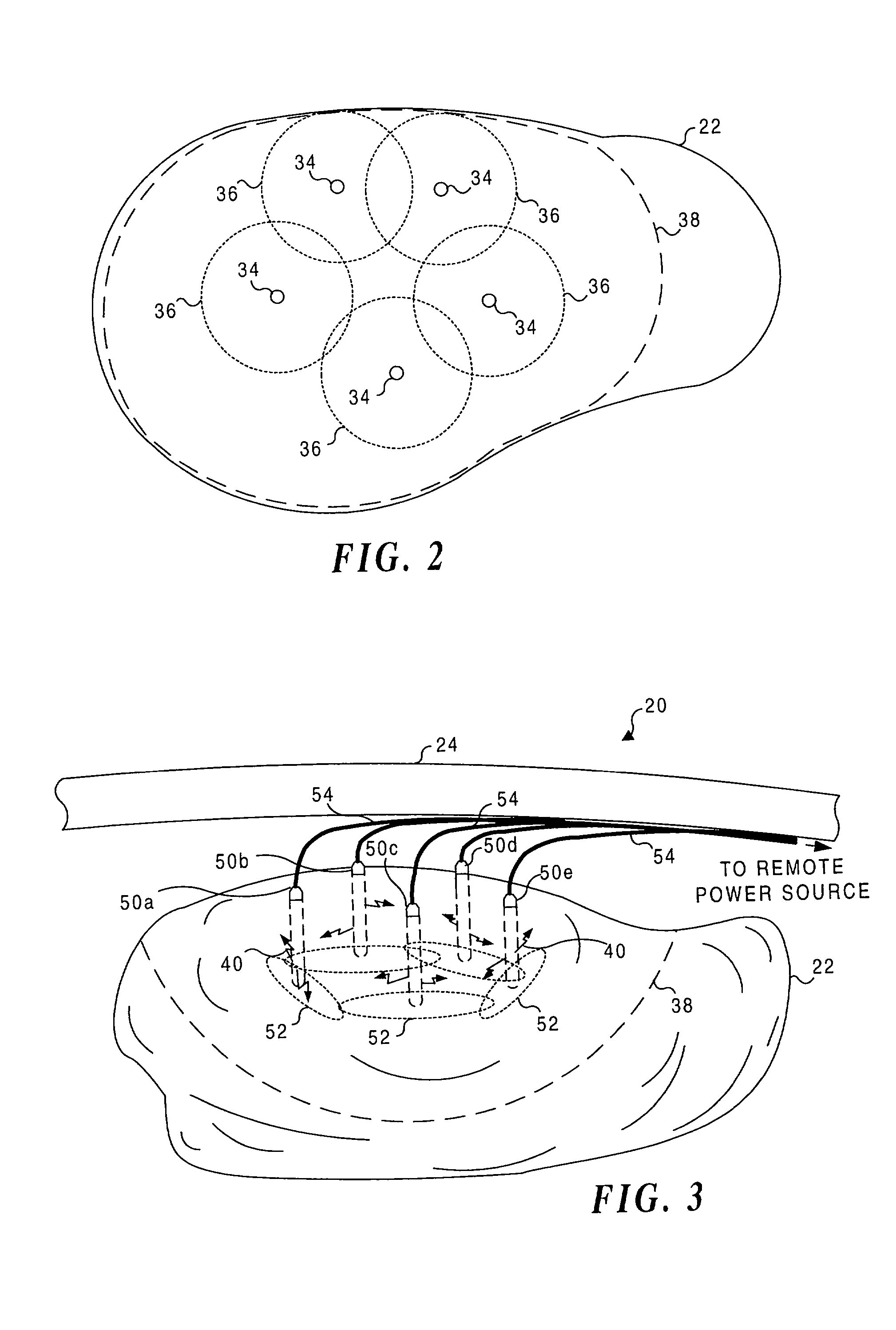Application of light at plural treatment sites within a tumor to increase the efficacy of light therapy
a tumor and light therapy technology, applied in the field of light therapy, can solve the problems of concomitant effect and concomitant effect, and achieve the effect of destroying quickly
- Summary
- Abstract
- Description
- Claims
- Application Information
AI Technical Summary
Benefits of technology
Problems solved by technology
Method used
Image
Examples
Embodiment Construction
[0036] With reference to FIG. 1, the present invention is illustrated in connection with treating a tumor 22 that is disposed within a patient's body 20. Tumor 22 is relatively large, having a length of approximately 7 to 10 cm and a transverse width of about 7 cm in this exemplary illustration. The tumor is disposed below a dermal layer 24, for example, within the patient's abdominal cavity.
[0037] In the present invention, PDT plays an important role is destroying abnormal tissue comprising tumor 22. As is done when rendering conventional PDT, a photoreactive agent is administered to the patient either orally or by injection and is selectively preferentially absorbed by the abnormal tissue of tumor 22. Thereafter, using a surgical procedure to access tumor 22 through dermal layer 24, or using an endoscopic procedure with minimally invasive impact, a plurality of optical fibers 30a-30e are inserted into the interior of tumor 22 in a spaced-apart array so that the optical fibers are ...
PUM
 Login to View More
Login to View More Abstract
Description
Claims
Application Information
 Login to View More
Login to View More - R&D
- Intellectual Property
- Life Sciences
- Materials
- Tech Scout
- Unparalleled Data Quality
- Higher Quality Content
- 60% Fewer Hallucinations
Browse by: Latest US Patents, China's latest patents, Technical Efficacy Thesaurus, Application Domain, Technology Topic, Popular Technical Reports.
© 2025 PatSnap. All rights reserved.Legal|Privacy policy|Modern Slavery Act Transparency Statement|Sitemap|About US| Contact US: help@patsnap.com



